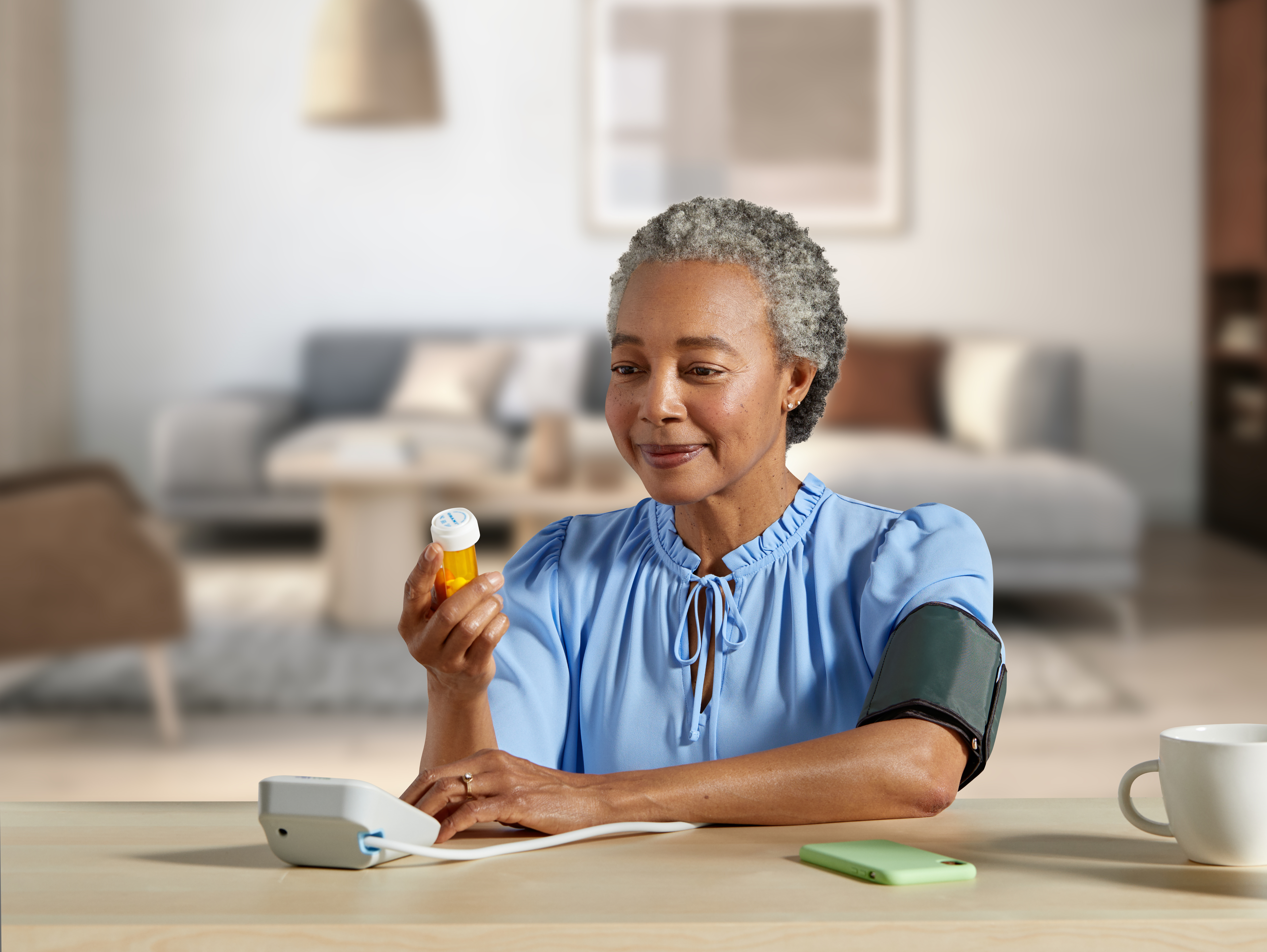With the cost of in-facility care skyrocketing and hospitals battling persistent staffing shortages, Americans are looking for better and less expensive ways to receive care for both acute and chronic conditions. At the same time, hospitals must free up bed space for those in need and prevent readmissions.
One solution is care-at-home programs, which have been proven to decrease both the length of hospital stays and readmission rates — lowering overall cost of care in the process — while also reducing the risk of falls and hospital-acquired infections. Plus, patients using remote solutions in their homes are three times more likely to be satisfied with the overall care experience. However, while a majority (70%) of U.S. health leaders surveyed in GE HealthCare’s Scaling Post-Acute Care: Opportunities & Obstacles rate hospital-to-home continuity of care as highly or extremely important, fewer than a third of respondents (27%) prioritize investment in the out-of-hospital digital tools necessary to scale post-acute programs.
To tackle the current challenges faced by health systems and enhance post-acute care services, GE HealthCare and Biofourmis, a global technology company enabling care delivery, began a strategic collaboration this year with the goal of helping our customers return eligible patients to their homes earlier and with the comfort and peace of mind that they will continue to receive high-quality care. The collaboration also reinforces the value that virtual care-at-home can provide for hospitals and healthcare systems, along with its potential to address challenges in the industry.
The value of virtual patient monitoring
The GE HealthCare–Biofourmis collaboration leverages the two companies’ expertise to deliver hospital-directed care in the home. It helps health systems meet increased demand for lower-cost, more convenient healthcare delivery that was accelerated by the COVID-19 pandemic.
Customers have the option to integrate a patient’s electronic medical records from the hospital system with Biofourmis’ platform and applications via a single-pane interface with GE HealthCare’s connector and implementation services, allowing for seamless and secure syncing of patient data between the two.
GE HealthCare’s FlexAcuity™ patient monitoring solutions in combination with its hospital-based virtual care solutions, including Mural ICU, Command Center and Digital CMU, help manage and monitor acute patients during their hospital stay from admission to discharge. These tools enable care teams monitor vital signs, electrocardiograms and other physiologic data and to quickly see and intelligently connect informative insights to support rapidly evolving patient needs.
When a patient is ready to be transitioned beyond the hospital setting, their care team can offer Biofourmis’ care-at-home solutions, with remote management of personalized care plans assisted by condition-specific monitoring devices and in-home clinical services if required.* By offering Biofourmis’ virtual care-at-home solutions to customers, GE HealthCare ensures that care teams have a longitudinal patient view beyond the hospital setting. Moreover, insights from Biofourmis’ FDA-cleared, AI-guided algorithms can help teams deliver efficient, personalized care at home.
“Combining our companies’ demonstrated capabilities will help revolutionize the way we approach the patient care journey, as well as contribute to address current challenges faced by health systems, including hospital capacity issues and clinical staffing shortages,” Banerjee says.
Extending patient monitoring and care solutions to the home
Biofourmis enables care both virtually and in person with its digital platform, combining FDA-cleared and AI-guided algorithms with clinical-grade wearable devices and in-home services orchestration technology.
Biofourmis’ tech platform ingests biometric data from clinical-grade continuous and episodic devices, and uses AI-enabled analytics to establish patient-specific baselines and detect decompensation. The Biofourmis solution uses a patient app to facilitate engagement with the care plan and communication between patients and their care teams. It’s a solution that demonstrates enhanced clinical outcomes and extends health equity and patient convenience.
“Our platform has a module in which you can orchestrate the delivery of those in-home services, whether it’s ordering, scheduling or tracking services, with external vendors or within your own healthcare ecosystems,” says Ross Armstrong, general manager of Biofourmis.
From left: Ross Armstrong, general manager of Biofourmis and Ashutosh Banerjee, VP for digital delivery and customer success for GE HealthCare.
Remote health-monitoring solutions that can help with patients discharged early
During a patient’s hospital stay, digital tools like GE HealthCare’s Command Center leverage and analyze patient management data from various sources, providing clinicians with insights they need to make timely and confident decisions about transitioning patients to various care areas — from critical care to telemetry to observation to discharge. In-hospital digital tools also include specific criteria for virtual care-at-home candidates to support hospitals in identifying and routing appropriate patients for discharge based on patient data and insights. Managing these patients at home can free up hospital beds for patients who truly need them.
For appropriate candidates, Biofourmis’ virtual care-at-home solutions allow patients to leave the hospital earlier by facilitating remote monitoring and case management. For example, a patient experiencing heart failure may be discharged and receive one or two additional doses of intravenous diuretic in the comfort of their home. Biofourmis will organize IV administration and continue to monitor the patient’s health status and progress for 30 to 90 days to ensure care protocols are being followed and to prevent readmission.
“We think our collaboration can actually help work with clinicians to ensure better patient outcomes, improve financials in the hospital and really bring a better quality of care to patients,” Banerjee says. “The future is promising for patients, caregivers and healthcare institutions.”
For more information, visit our Virtual Care Solutions portal.
*A nurse liaison, telehealth nurse or health navigator will perform those services only in accordance with applicable scope of practice and state laws governing the corporate entity and where geographically available.



